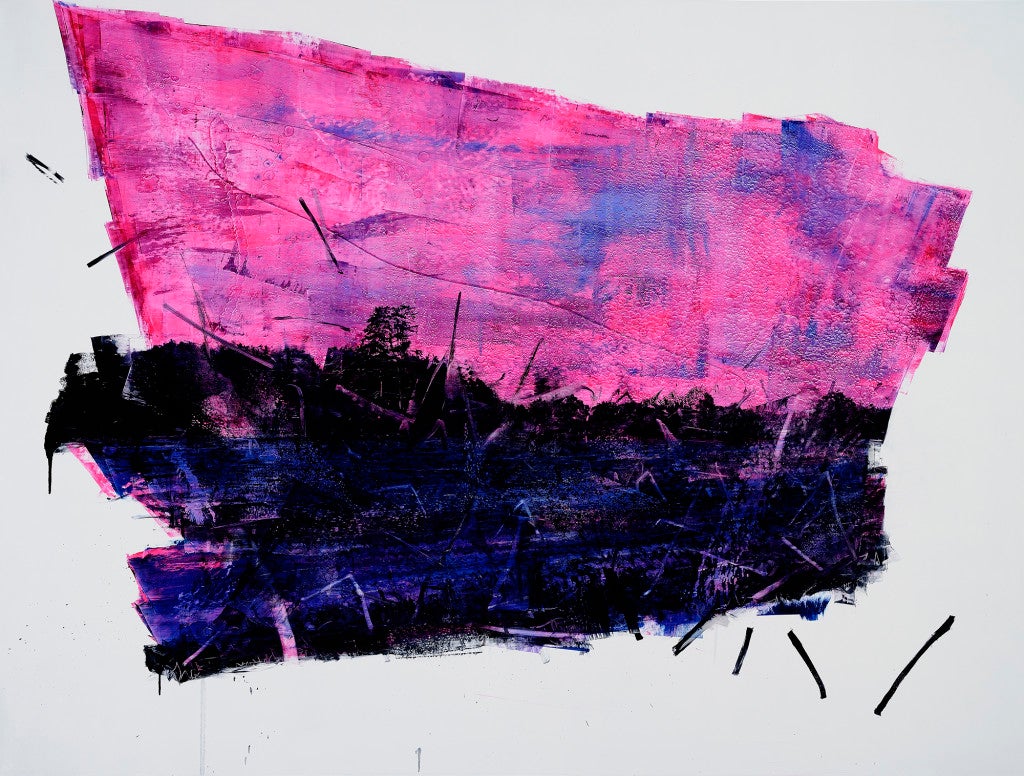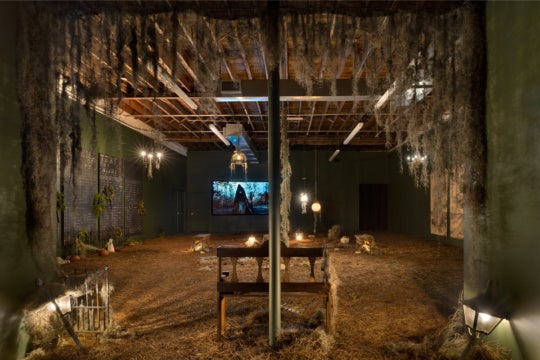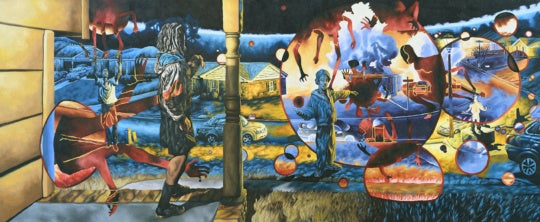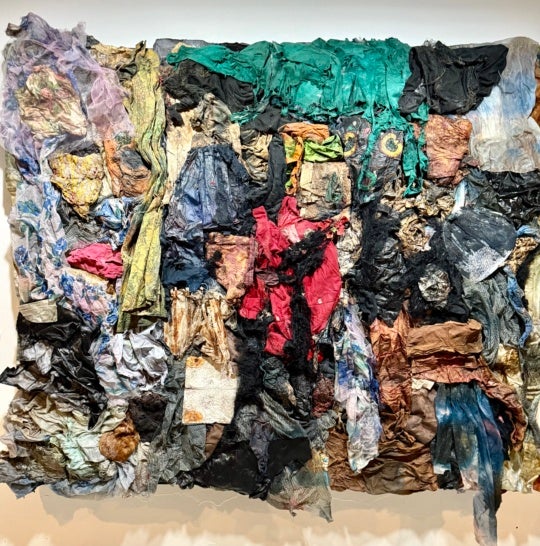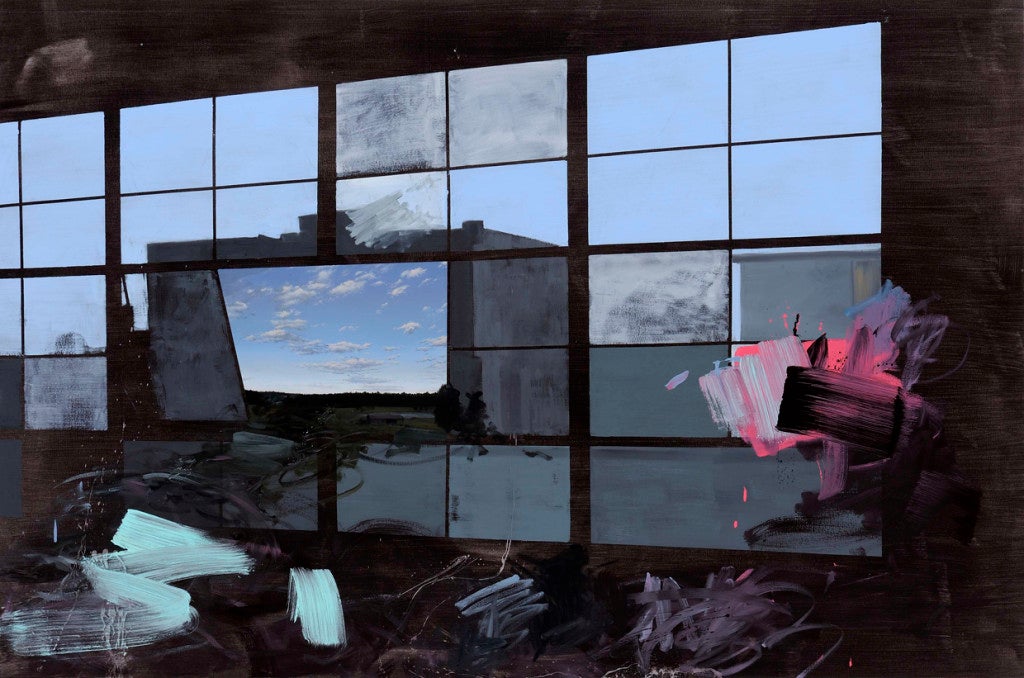
Imagine a specific time of day in your favorite season in your hometown. For me, it’s late afternoon in mid-summer, and I’m leaning out the side window of the family Toyota minivan as we leave the lake. We drive by the big rock painted like a dog’s face, and the sun hits it just so.
But my family connives to sabotage all of my best memories. “I would never let you hang out the window,” my mother insists. “The dog rock was painted over by then,” my brother counters.
Yet the memory persists, for it encapsulates the specific feeling of the summer afternoons I spent with my mother and siblings at the lake in my hometown when I was a child.
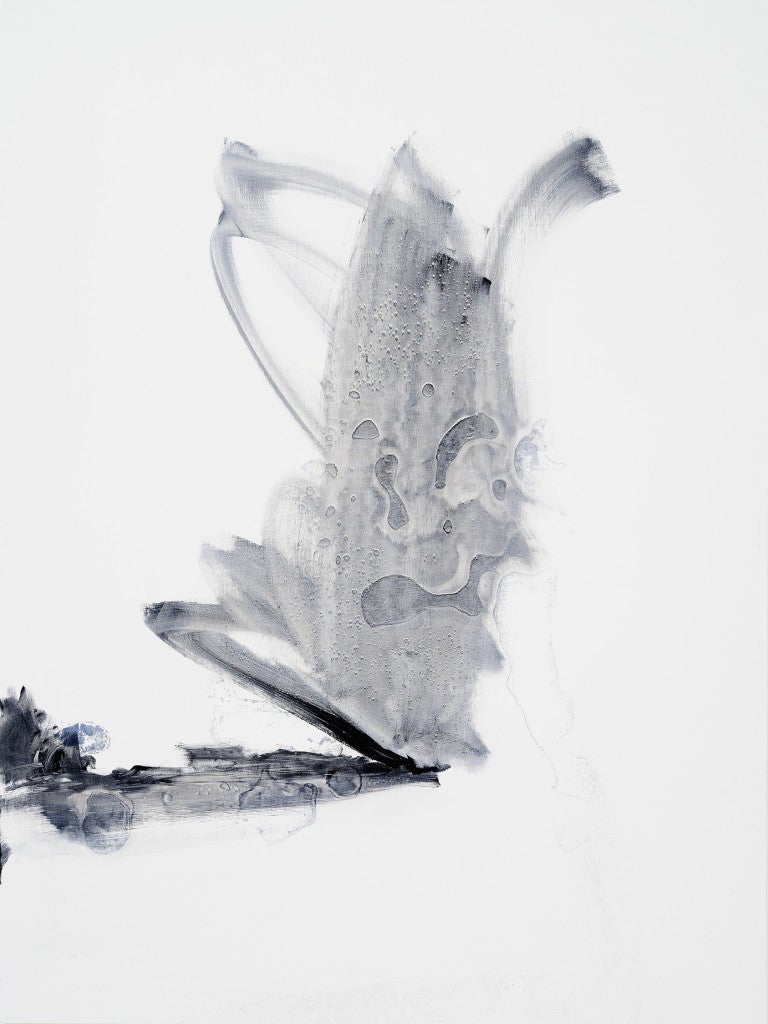
Imprecise as our memories are, they reflect back our current selves more than our past selves. In the same way, Damian Stamer’s abstracted landscape paintings of his hometown contain not only the artist’s impressions of his childhood, but the whole of his experiences since, making us consider our own narrative arcs and their inevitable falsehood.
Stamer, who lives and works in North Carolina, led a walk-through of his solo exhibition “New Paintings” at Nashville’s Sherrick & Paul on January 16. Although young, he’s been racking up experience over the past 10 years, studying at UNC Chapel Hill, the State Academy of Art and Design in Germany, and the Hungarian University of Fine Arts, and his hard work is paying off. His large-scale oil paintings of tumultuous landscapes show technical precision and a strong point of view.
In some of Stamer’s earlier work, the pastoral landscapes are exceptionally skilled: stacks of tires lean against the skeleton of a house; a tree line dissolves into the sky. Other of his works seem more Surrealist-influenced, like Back Where I Come From (2013), which puts the viewer inside a bleak warehouse, looking out an odd window at a perfect, cloud-dotted sky. While these works reveal Stamer’s technical skill, his new paintings at Sherrick & Paul hum with energy, the confident brushstrokes and colors alive with personal resonance.
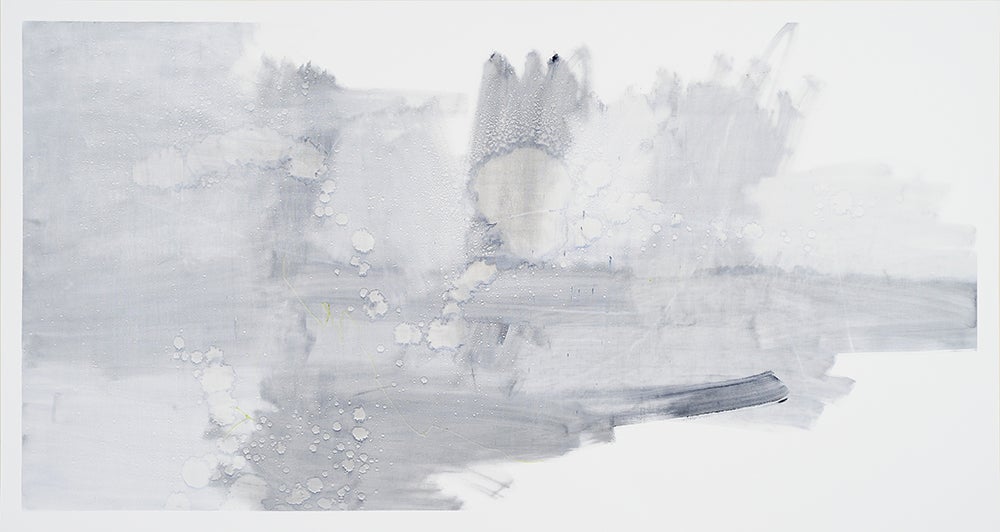
Many of these paintings have a Dorothy-in-Kansas feel. Monochromatic tones heed to bold pastels, some like portals into other, magical worlds. Stamer performs an intense exploration of the medium with depth, both actual and conceptual. Using a wide range of marking techniques, Stamer leads the viewer through the paintings. While some, like Little River 3, a 72-by-95 inch behemoth, emphasize a building-up of color to create texture, others, like Little River, show a lightness of touch as if Stamer has subtracted from them.
Each piece is a personal exploration of place and the artist’s materials. He works on wood panels because wood can withstand heavier pressure as he moves paint around, giving the painting depth by drawing attention to its surface. Although the works are unframed, Stamer uses white borders that mimic a frame or a photograph. He hints at cabins, farmhouses, and trees, but these are secondary to the mood he strikes with color and texture, creating a two-stage viewing process. At the walk-through, several people got right up against the sides of the panels to inspect the actual depth of the paint, only to find it quite flat.
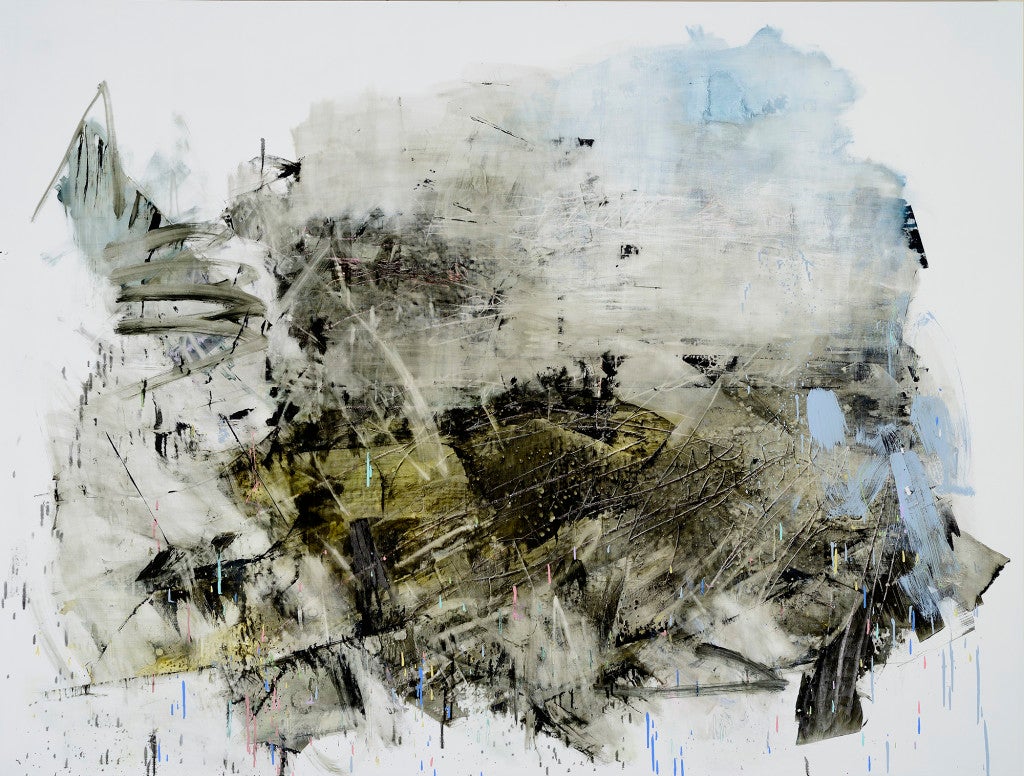
His process pays tribute to our inability to access memories over time. The title South Lowell 32 tells us that Stamer has worked through at least 32 iterations of this particular subject, much like a writer completes drafts to flesh out a story’s structure, conflict, and themes. But unlike a writer, Stamer includes the drafts as works in and of themselves—not just steps to completing a single finished piece. I especially love how the New Sharon Church Rd series gets more and more faint, the house’s structure dissolving with each draft until we’re left with a ghost.
In each, we see time passing and memories eroding. The bright explosions of color read as bursts of remembering, oozing the illusions of a reconstructed past. We never remember what really happened; we remember what suits our overarching narrative of self. When we look back, we see through our old eyes and with our current worldviews, with the compounded influence of all our experiences. Five years later, we look back again, and the memory has changed, maybe just slightly: the way the window caught the afternoon light, a man’s smile changing from warm to ambivalent, a mother’s voice from disappointed to desperate. Though we construct our narratives around big, often tragic events, we live in nuance. It’s where we tap the most meaning.
Stamer’s new paintings remind us that some of our greatest truths cannot be captured by the sharp realism of photography or the slick facts of journalistic prose. Our lives are shot through with the resounding mystery of perspective, sometimes best captured by fiction.
Damian Stamer’s exhibition is on view at Sherrick & Paul through February 28.
